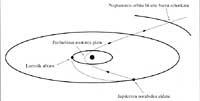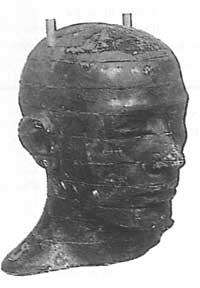Interstellar probe mission
1990/11/01 Arregi Bengoa, Jesus Iturria: Elhuyar aldizkaria
The data sent to us today by the Pioneer and Voyager spaces are the first direct information we receive on the outside of the heliosphere. It is therefore a very important information, but it cannot be used in the study to treat some conclusions of interest. As we will soon see, the problem in this outer zone of the heliosphere (Pioneer 10, for example, 47 U. A is) this is the immersion season you have had to spend.
From the cosmic ray data sent to us in the last 17 years it follows that its intensity increases depending on the distance, between 2 and 4% per astronomical unit. That is, the intensity of the rays to 47 U.A. is about 2.5 times the intensity of the Earth. But since the launch of the four spaces the intensity of cosmic rays on Earth has varied greatly due to the activity of the Sun.

Therefore, it is difficult to distinguish the exact dependence of the distance in the rise of this intensity. The way to overcome the problem is evident. The duration of the probe's journey, which would make actual measurements of cosmic ray variation, should be short compared to the 11-year cycle of solar activity, to reduce as much as possible the distortion that constitutes this variable.
Scientists dealing with this issue have already proposed a mission that would fulfill this particularity. The project has been named Interstellar Probe. The flight plan would be as follows: the spacecraft would head to the first Jupiter, using the gravity force of this planet to change its path to the Sun. Thanks to the high speed achieved, the boat could pass two million kilometers from the Sun (about three times its radius). At the minimum distance point another engine would be lit to make the speed even higher. The escape velocity thus obtained would be sufficient to reach the orbit of Neptune for two years.
The trip is not Bapatí, as it should be theoretically, but we can consider that that duration is short if we take into account that Voyager 2 took twelve years to approach Neptune. Continuing the calculations, the Interstellar Probe would be located at 140 U.A. for about six years, that is, in a semicycle of Sun activity. According to the data we presented in the previous number, by then the heliopause and the shock wave would be about to cross. In addition to the radial study of the heliosphere, it would be possible to carry out a comparative study using data sent by Voyager from other places that could still cross the heliosphere.
The need for this mission is not based solely on the study of the heliosphere. The second fundamental objective would be, logically, the study of interstellar space outside the influence of the Sun. In addition, it seems that magnetosphere structures are quite common throughout the universe. In addition to being known on the Sun and on all planets, they have been found in some active pulnets and galaxies. Therefore, the collection of knowledge that can be achieved would greatly help to understand these structures.
The Interstellar Probe mission could be close by the year 2000, but, as we have said many times, all these projects depend in many cases on other types of more coordinating reasons than purely scientific objectives, and no accuracy has yet been given. If the Interstellar Probe project was not carried out, Voyager 1 would be the only possibility to approach the results of the problems raised.
EPHEMERISSUN: On December 22 enters CAPRICORN at 3 hours and 6 minutes (UT): SOLSTICE. Winter begins. MOON: FOURTH CRESCENT MOON December17an2531PLANETS
|

Gai honi buruzko eduki gehiago
Elhuyarrek garatutako teknologia





